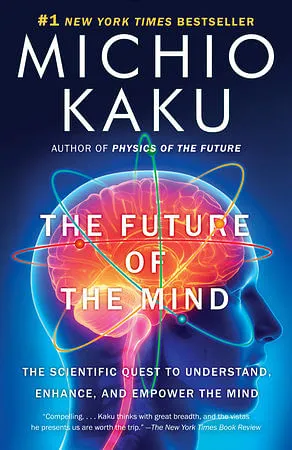Neo is The One. Only he can lead a defeated humanity to victory against the Machines. Only Neo can destroy the Matrix, which has implanted false memories into our brains as a means to control us.
In a now-classic scene from the film The Matrix, the evil Sentinels, who guard the Matrix, have finally cornered Neo. It looks like humanity’s last hope is about to be terminated.
But previously Neo had had an electrode jacked into the back of his neck that could instantly download martial-arts skills into his brain. In seconds, he becomes a karate master able to take down the Sentinels with breathtaking aerial kicks and well-placed strikes.
In The Matrix, learning the amazing skills of a black-belt karate master is no harder than slipping an electrode into your brain and pushing the “download” button. Perhaps one day we, too, may be able to download memories, which will vastly increase our abilities.
But what happens when the memories downloaded into your brain are false? In the movie Total Recall, Arnold Schwarzenegger has fake memories placed into his brain, so that the distinction between reality and fiction becomes totally blurred.
He valiantly fights off the bad guys on Mars until the end of the movie, when he suddenly realises that he himself is their leader. He is shocked to find that his memories of being a normal, law-abiding citizen are totally manufactured.
Hollywood is fond of movies that explore the fascinating but fictional world of artificial memories. All this is impossible, of course, with today’s technology, but one can envision a day, a few decades from now, when artificial memories may indeed be inserted into the brain.
How we remember
Like Phineas Gage’s, the strange case of Henry Gustav Molaison, known in the scientific literature as simply HM, created a sensation in the field of neurology that led to many fundamental breakthroughs in understanding the importance of the hippocampus in formulating memories.
At the age of nine, HM suffered head injuries in an accident that caused debilitating convulsions. In 1953, when he was twenty-five years old, he underwent an operation that successfully relieved his symptoms.
But another problem surfaced because surgeons mistakenly cut out part of his hippocampus. At first, HM appeared normal, but it soon became apparent that something was terribly wrong; he could not retain new memories.
Instead, he constantly lived in the present, greeting the same people several times a day with the same expressions, as if he were seeing them for the first time.
Everything that went into his memory lasted only a few minutes before it disappeared. Like Bill Murray in the movie Groundhog Day, HM was doomed to relive the same day, over and over, for the rest of his life. But unlike Bill Murray’s character, he was unable to recall the previous iterations.
His ong-term memory, however, was relatively intact and could remember his life before the surgery. But without a functioning hippocampus, HM was unable to record new experiences. For example, he would be horrified when looking in a mirror, since he saw the face of an old man but thought he was still twenty-five.
But mercifully, the memory of being horrified would also soon disappear into the fog. In some sense, HM was like an animal with Level II consciousness, unable to recall the immediate past or simulate the future. Without a functioning hippocampus, he regressed from Level III down to Level II consciousness.
Today, further advances in neuroscience have given us the clearest picture yet of how memories are formed, stored, and then recalled. “It has all come together just in the past few years, due to two technical developments—computers and modern brain scanning,” says Dr. Stephen Kosslyn, a neuroscientist at Harvard. As we know, sensory information (e.g., vision, touch, taste) must first pass through the brain stem and onto the thalamus, which acts like a relay station, directing the signals to the various sensory lobes of the brain, where they are evaluated.
The processed information reaches the prefrontal cortex, where it enters our consciousness and forms what we consider our short-term memory, which can range from several seconds to minutes.
To store these memories for a longer duration, the information must then run through the hippocampus, where memories are broken down into different categories. Rather than storing all memories in one area of the brain like a tape recorder or hard drive, the hippocampus redirects the fragments to various cortices.
(Storing memories in this way is actually more efficient than storing them sequentially. If human memories were stored sequentially, like on computer tape, a vast amount of memory storage would br required. In fact, in the future, even digital storage systems may adopt this trick from the living brain, rather than storing whole memories sequentially.)
For instance, emotional memories are stored in the amygdala, but words are recorded in the temporal lobe. Meanwhile, colours and other visual information are collected in the occipital lobe, and the sense of touch and movement reside in the parietal lobe.
So far, scientists have identified more than twenty categories of memories that are stored in different parts of the brain, including fruits and vegetables, plants, animals, body parts, colours, numbers, letters, nouns, verbs, proper names, faces, facial expressions, and various emotions and sounds.
Excerpt From: Michio Kaku. “The Future of the Mind.”







